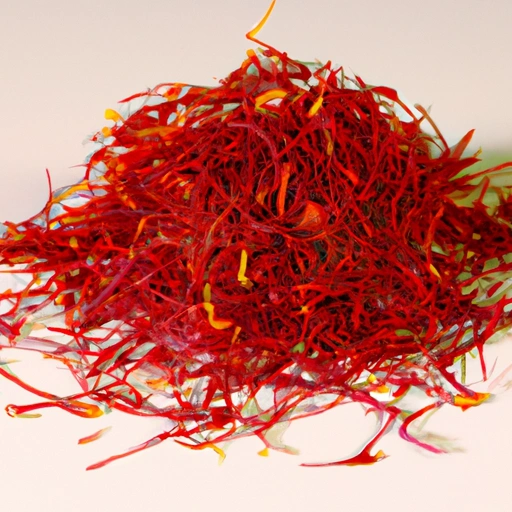Saffron
Description

Saffron, often referred to as 'red gold,' is the world's most expensive spice by weight and is highly prized for its unique flavor, aroma, and color. Derived from the stigmas of the Crocus sativus flower, it takes approximately 75,000 saffron blossoms to produce a single pound of this precious spice, which explains its premium pricing. Saffron's signature deep red threads are delicately handpicked during the autumn flowering season and gently dried, a process that contributes to the spice's exclusivity and cost.
Common uses
Saffron is widely used in traditional dishes across different cultures, particularly in Middle Eastern, Indian, and Mediterranean cuisines. It is also used as a natural dye and in perfumery.
Nutritional value
Calories
A serving of 1 tablespoon (2 grams) of saffron contains approximately 6 calories.
Protein
Saffron provides about 0.24 grams of protein per 1 tablespoon serving.
Fat
There is a negligible amount of fat in saffron, with less than 0.1 grams per serving.
Carbohydrates
Each tablespoon of saffron contains approximately 1.37 grams of carbohydrates.
Vitamins
Saffron is a good source of vitamins such as vitamin C, riboflavin (B2), and niacin (B3).
Minerals
It also contains minerals such as manganese, magnesium, iron, and potassium.
Health benefits
Saffron has been associated with numerous health benefits, including mood enhancement, potential protective effects against cancer, and improvement in heart health. Its antioxidant properties are also believed to promote overall well-being.
Potential risks
Because saffron is powerful and used in small quantities, it is generally safe for consumption. However, high doses can be toxic and may cause side effects such as nausea, dizziness, and headaches. Pregnant women should avoid consuming large amounts of saffron.
Common recipes
Saffron is a key ingredient in traditional dishes like Spanish paella, Italian risotto alla Milanese, Indian biryanis and sweets, Persian rice dishes, and French bouillabaisse.
Cooking methods
To unlock its flavor and color, saffron is often steeped in hot water, broth, or milk before being added to recipes. It is typically used in small quantities due to its potency.
Pairing with other ingredients
Saffron pairs well with ingredients such as seafood, chicken, rice, tomatoes, and dairy products like cream and cheese.
Summary
Saffron is a luxurious and exotic spice that not only adds a beautiful golden hue and a complex flavor profile to dishes but also offers potential health benefits. Given its cost, saffron is often sold in small quantities and should be used sparingly to impart its distinctive essence to a variety of culinary creations.